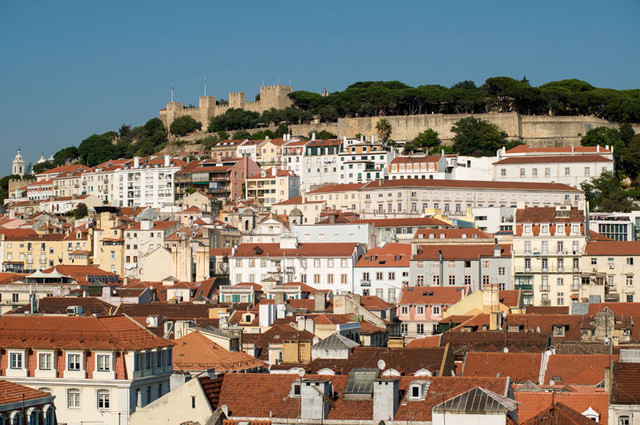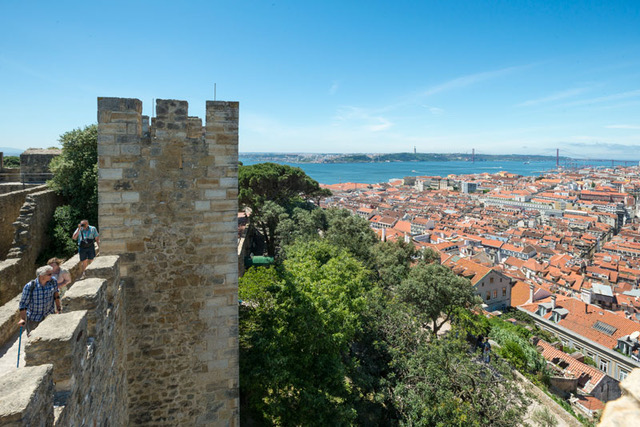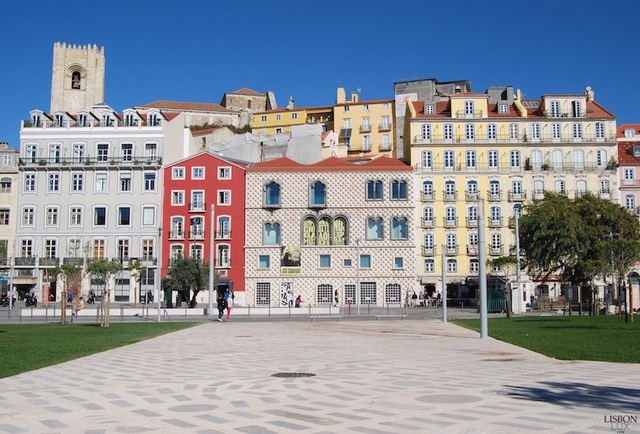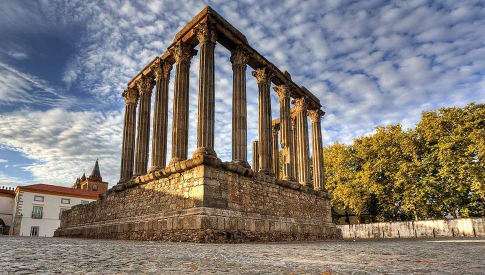IWOTA 2019
International Workshop on
Operator Theory and its Applications
IWOTA 2019
International Workshop on
Operator Theory and its Applications
The Conference dinner will take place on Thursday, July 25, at the Estufa Real located in the beautiful Ajuda Botanical Garden, an 18th century greenhouse with a breathtaking view over the river Tagus. At the end of the dinner, you will watch a live show of Fado, a traditional Portuguese music. There will be a direct bus service between IST, University of Lisbon and the restaurant. Bus fare: 5€. Accompanying person 48€.





On Wednesday afternoon, there will be a guided walking Tour through Lisbon's downtown and Alfama / Castelo areas. There will be a bus with a tour guide taking us from Técnico to the location of the start of the tour, and back by the end of the afternoon. The Tour comprises entries to the Lisbon Story Center, and either to the Castle of S. Jorge — Option A — or to the Museum of Fado — Option B. You should say at Registration which one do you prefer (there may be limited places).
The Tour starts at Campo das Cebolas, where you can find the iconic Casa dos Bicos, where the José Saramago Foundation is located. It is a short walk to Terreiro do Paço, a beautiful square opened to the river carrying centuries of Portuguese history, now a focal point of downtown Lisbon. While there, we will visit the Lisbon Story Center, an interactive museum where you can experience the history of Lisbon. Then there are two options:
OPTION A: Uphill to Castle of S. Jorge We walk through the meandering streets of Alfama, one of the oldest neighborhoods of Lisbon, up to theCastle of S. Jorge. You can visit the Castle, and enjoy the amazing full views of Lisbon and the Tejo River. (Beware: the way is steep!) We then walk down back to Campo das Cebolas, where the Tour ends.
OPTION B: Along downtown Lisbon to Museum of Fado We walk to Largo Chafariz de Dentro, on the foot of Moorish neighborhood of Alfama, where we visit the Museum of Fado. You will also have a chance to explore the narrow streets that make Alfama so unique. Then walk back to Campo das Cebolas, where a bus will take us to Técnico.
On Saturday, July 27, two excursions are being organised for IWOTA participants and accompanying persons. Both Tours are around 8 hours long, and require a minimum of 19 participants. One of the tours will be to the Lisbon beautiful surroundings and the other to Évora and Monsaraz, in the Alentejo region.
These tours are not included in the conference fee. Price includes: entry to the monuments, bus trip and official English speaking tour guide. Meals are not included. The payment of the Tours is due together with the registration fee.
Some of the best attractions of the Lisbon region are located in Sintra and Cascais. The trip starts with a visit to the Queluz National Palace. This 18th century palace is one of the last great rococo buildings erected in Europe and serves nowadays as the residence of Heads of State visiting Portugal. Not far from there you will find beautiful Sintra between mountains and sea. The romantic aura left by the authors of the eighteenth and nineteenth centuries is one of the reasons why Sintra is a favourite destination for travellers around the world. There will be a 1h30m stop in the historical centre for lunch and to enjoy its charming narrow streets, beautiful tiles, ceramics and handicrafts. It is also planned a visit to Pena National Palace, the finest and most notable example of romantic architecture in Portugal.
Cabo da Roca, the westernmost point of continental Europe, will be the next stopping point. The return to Lisbon will be by the scenic coastal road passing through Cascais, a former fishing village, nowadays a famous tourist resort, and the Estoril Coast.
Fare: 78 € per person.

Christians, under the command of Geraldo Geraldes, conquered Évora from the Moors, offering the town to the first Portuguese king, Afonso Henriques, in 1165. There is a lot to see in Évora, as the compact city has the second largest number of national monuments of Portugal. Highlights include the Roman Temple of Diana, S. Francisco cathedral, and the Capela dos Ossos (Chapel of Bones).
The Temple of Diana is considered as the best preserved Roman temple in the Iberian Peninsula. The temple is named after the Roman goddess Diana but, when it was constructed in the 1st century, it was actually dedicated to Emperor Augustus. The cathedral of S. Francisco is a beautiful example of gothic architecture, which closely resembles the fortified cathedral in Lisbon. The cathedral of Évora is unique among gothic architecture buildings as normally there is line symmetry across the front portal but it has two mismatched towers. From the roof of the cathedral you can enjoy wonderful views of Évora, as the cathedral was constructed on the highest point of the city. There is no stranger attraction in Évora than the macabre Capela dos Ossos (the Bone Chapel). The walls of this small chapel are lined with the bones and skulls of more than 5,000 bodies that were exhumed from the crowded graveyards of Évora. These bones have not just been placed into the walls but actually form the decoration of the chapel, as it was a Franciscan Counter-Reformation belief that death is purely a transitory stage. The creepiness is compounded by the wording above the entrance, which reads "We the bones wait for yours".
There will be some time to visit the town center and to choose some place to have a meal.
The second and last stop will be to the medieval village of Monsaraz. Suspended in time, the historic village, one of the oldest in Portugal, is a mandatory destination. Monsaraz shows signs of having been a fortified settlement during prehistoric times. It has always had strong military and religious influences, impeccably preserved in time until today. The privileged location of this small village, located on the top of the hill with a view over the river Guadiana and the border with Spain, made it highly coveted by the peoples which disputed it.
Fare: 65 € per person